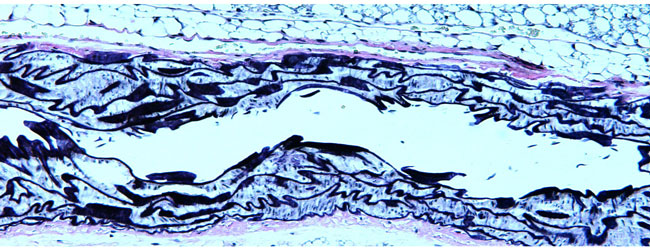The theory behind the idea of having shared microscopes is a good one, but, in reality, this can sometimes mean you have to put up with the dirty habits of your fellow scientists and researchers. And some of your lab mates turn out to be really mucky! Here’s my Top 10 of things which really get on my goat;
(1) Oil on lenses.
Why, oh why, oh why can users not realise that the objective which states ‘100X Oil’ is the only objective which you need to use oil with (there’s a clue in the name if you can spot it!)? Once you have finished with the ‘100X Oil’ objective, all it takes is a wipe with lab wipes to clean the oil off. There, done. The other objectives don’t need oil. Neither does the stage. Nor the focussing wheels, the eyepieces, the desk top. I often try to imagine the scene which has previously taken place when I chance upon a microscope in such an oily state. Has the previous user decided that everything around them is just a bit squeaky and stiff and oiled it all furiously like a demented steam engine driver?! Hmmm.
(2) Lamps left on.
Here’s a suggestion- if you are afraid of the dark, then perhaps a career using microscopes is not for you. I can only assume that the users who leave the microscope lamps on suffer from achluophobia (that’s the pathological name- no, I didn’t know that either!). Microscopy lamps ain’t cheap. Just ask any microscopy lab technician- but take a chair and cup of tea with you as you’ll be in for a long speech/rant.
(3) Slides left on stages.
I’ve never really figured this one out. Why spend days and hours preparing tissue, embedding, sectioning, staining, coverslipping and analysing- just to leave it on the microscope? Is this how much value some people place on their own work?!
(4) Food and drink.
There’s a place for eating and drinking- it’s generally called the refectory, common room, café, and restaurant. It’s not the microscopy facility. Yes, I know that we sometimes have to spend hours at the objectives, but you should be taking regular breaks anyway. Outside.
(5) Medics.
Look, we all know how important you are, but we also know you have a huge chip on your shoulder because you will forever remain ‘Mr’ or ‘Mrs’ and not ‘Dr’ like us real doctors. However, do really you have to wear surgical scrubs in a shared facility?! Yuck! We have no idea where you’ve been in those- in terms of both in the hospital and which parts of patients’ bodies have been graced by your presence. More worrying is the fact that you may be heading back into surgical areas in those same scrubs. MRSA anyone?
(6) Eye make-up on eye pieces.
This is a plea to wearers of make-up. Not wanting to appear sexist, this one is not only for females, but extends to emo’s and goths of both genders. Eye make-up is cool, but I’d rather not have a second-hand make-over whilst peering down the eye pieces. It’s not difficult to quickly clean the eye pieces after use- this goes for all users, goths or not.
(7) Lights on full beam.
Argh! My eyes! My eyes! As much as I love my research, I’d rather not have my images forever etched into my retina. At the higher magnifications, you’ll probably need more light, but please remember to turn the lamp controller back to the lowest position for the next user. Admittedly, we should all check that the light control is at zero before switching the microscope on, but if just hopping on to the microscope for a quick look, this can be overlooked and…’zap’! Temporary blindness! At least you won’t be able to see the medic eating their sandwiches at the next work station.
(8) Image files left on computer desktops.
Memory sticks. Wonderful things. You don’t even have to part with your hard-earned cash. Most scientific companies have them as freebies to give them away at trade shows and conferences. So, stock up. Use them. Drag your files from the microscope computer after use and then delete. Job done.
(9) Eye piece position.
Mythological creatures DO exist! I have seen the evidence. In the dark corridors of scientific institutes lurk beasts such as Cyclops and Fish-Boy. I’ve almost had my nose broken (again) after Cyclops has used the microscope and left both the eyepieces in the middle. After Fish-Boy has been examining his slides of plankton (or whatever he looks at), I’ve almost had my temples stuck between the eye pieces.
(10) Turn objectives back.
That objective nose-piece turns round y’know. If you’re going to leave the X100 objective covered in oil, the least you can do is turn the nose-piece back round to the smallest objective for the next user.






